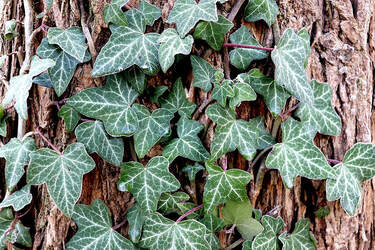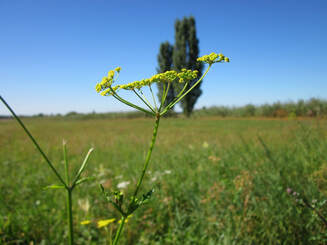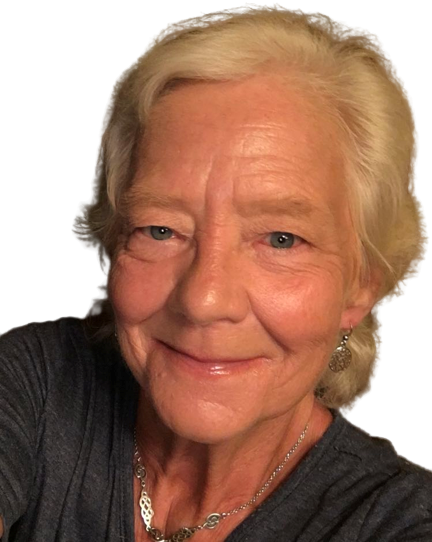 English Ivy
English Ivy The vines were spotted creeping up the trees in a wooded lot down the road a couple of years ago, but you never dreamed it would be a problem in your landscape. Surprise! Not only do the aggressive plant's roots travel underground, but birds and animals also carry the seed-filled berries hither, thither, and yon.
Invasive plants are not just a problem for homeowners. The blasted things are everywhere! The National Wildlife Federation reports that thousands of native-plant species are at risk of extinction. According to NWF's chief scientist, Bruce Stein, "If we are interested in conserving the diversity of life on Earth, we need to be very concerned about the large numbers of at-risk and declining [native] plants."
These quick-growing and at times, very aggressive plants take over the land, choking out the native species that have no defense against the overwhelming bullies. As a result, conservationists working to restore woodlands, prairies, wetlands, and other threatened ecosystems spend countless hours removing destructive plants only to have more unwanted seedlings spring up in their place. From my perspective, it's a never-ending battle, and I'm not sure who's winning.
What is an Invasive species? According to the USDA, it is defined as a species that is non-native (or alien) to the ecosystem under consideration and whose introduction causes or is likely to cause economic or environmental harm or harm to human health.
Why are invasive plants successful? According to the U.S. Forestry Service:
- They produce large quantities of seed.
- They can thrive in any type of soil.
- Invasive plant seeds are often distributed by birds, wind, or humans, allowing them to move great distances.
- Some Invasives have aggressive root systems that spread long distances from a single plant.
- These root systems often grow so densely that they smother the root systems of the surrounding vegetation.
- Some plant species produce chemicals in their leaves or root systems, which inhibit the growth of other plants around them.
 Wild Parsnips
Wild Parsnips The U.S. government estimates the cost from invasives to be $120 billion, with more than 100 million acres affected, an area about the size of California. The Forestry Service reports that the establishment and spread of invasives:
- Have contributed to the decline of 42% of U.S. endangered and threatened species and 18% of U.S. endangered or threatened species.
- Compete directly with native species for moisture, sunlight, nutrients, and space.
- Decrease overall plant diversity.
- Can degrade wildlife habitat.
- Results in poor quality agricultural lands.
- Degrades water quality.
- Increases soil erosion.
- Decreases recreation opportunities.
Where do invasive plants come from? Stores and nurseries sell what the public wants. Therefore, they stock listed invasive plants such as butterfly bush and burning bush. They also import exotic flowers, shrubs, bushes, and trees from other parts of the world, selling them to homeowners across the country.
However, the importation and spread of non-native plants aren't anything new. It's been going on since immigrants settled in America. Colonists brought many plants from their homelands, and the foreign grasses and flora were sown from the east coast to California as the settlers migrated west. It was one of our ancestors who originally planted that bothersome English Ivy around their homestead. Unfortunately, when folks discovered the plant was a nuisance, it was too late, and we have been suffering the consequences ever since.
I have to note, though, not all invasives are imported. A plant might be native in one area of the country but a listed invasive in another. For example, crownbeard daisies are native to Colorado but are invasive In Hawaii.
What plants should we avoid?
Ecowatch lists ten of the most invasive species in the U.S. as:
- Bamboo
- English Ivy
- Callery or Bradford Pear Trees
- Wisteria Sinensis
- Cogongrass
- Purple Loosestrife
- Japanese Honeysuckle
- Winged Burning Bush
- Norway Maple
- Barberry
Are all non-native plants invasive?
NO! There's a big difference between non-native and invasive. Non-native simply means the plant was introduced to an area. The plant could have originated in a different region of the U.S. or be from Europe or Asia, but a non-native does not pose a threat to native plants. They may not support the local ecosystem's health as well as native plants do such as dandelions and clover, but they do no harm. Other non-native species include petunias, hyacinths, zinnias, and many food crops such as rice, wheat, and tomatoes.
How to know what's invasive?
To know if a plant is native, non-native, or invasive, ask local experts. Pick the brain of someone from a WildOnes Chapter or your state's native plant society. In addition, check out state and county resources, university extension offices, master gardeners, clubs, and conservation organizations. You can find information online too.
Play it safe. Before putting an exotic in your garden, try to find a native alternative, i.e., Rudbeckia instead of zinnias.
Consider a plant's potential for getting away from you. Certain herbs are better placed in a confined area where they cannot escape.
Do your homework and know what you're getting into before you go shopping. It may take time, but it's better to be safe than sorry.
Happy Gardening, everyone!
 RSS Feed
RSS Feed

